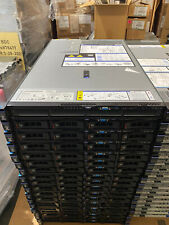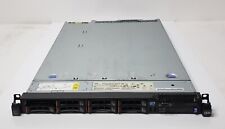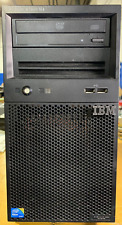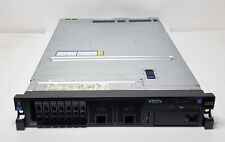-
Senior Member
registered user
Expanding the persistent store to 8+ GB as a first step
To follow up, I think it may be an advantage to do as much as possible before starting the remastering process. That implies doing package installs, upgrades etc the "ordinary" way as much as possible. But how to, within 4GB space? No way there, but we don't have to confine ourselves to FAT32 and DVD limitations.
I just tried out expanding knoppix-data.img to 8.5 GB, and that works well on ext3. I place the Knoppix package on an ext3 partition and run from there, starting from USB with the fromhd= cheatcode. I'm not sure if there will be some kind of performance problems with large loop-mounted images, but I haven't seen any so far. So I will try with an even larger persistent store, allowing me to do more comprehensive installs and compile large programs.
If we, after cleaning up and remastering, get outside the 4GB limits, there are several ways to still use USB sticks as basis. The simplest is to format the stick to ext2/ext3, install (for example) GRUB on it and just dump the Knoppix files to it. Somewhat more elaborate would be to split the compressed packages on two volumes, or work with several uncompressed volumes - that has worked just fine for me.
I think using Linux file systems on sticks is very practical. For exchange of data with other platforms, we can set up a smaller FAT (or even NTFS) partition on the stick, and have that partition automatically mounted on boot-up. Typically, a 16 GB stick could be partitioned into 15 GB ext2 and 1 GB FAT32, the ext2 volume: 4 GB compressed, 10 persistent and 1 spare.
-
Senior Member
registered user

Originally Posted by
Capricorny

I just tried out expanding knoppix-data.img to 8.5 GB, and that works well on ext3. I place the Knoppix package on an ext3 partition and run from there, starting from USB with the fromhd= cheatcode. I'm not sure if there will be some kind of performance problems with large loop-mounted images, but I haven't seen any so far. So I will try with an even larger persistent store, allowing me to do more comprehensive installs and compile large programs.
I have used ext3 persistent store for quite sometime now. The only performance problem with large ext3 and ext2 file system ( not specifically to loop-mounted ones ) is when you have to do file system check. The file system check time is really slow when compared to ext4.
-
Senior Member
registered user
Package purging

Originally Posted by
kl522

... The file system check time is really slow when compared to ext4.
I use a 16.5 GB ext2 persistent store, for testing now, seems like checking takes some time.. But, it seems to work. Full system upgrade went well. Which is not obvious, as, for example, I found that dpkg halts in updates on one missing newline in one file list - regardless of dependencies. Now is the time for purging/pruning. Is there any available hinting for this? The packages list, like in http://ftp.knoppix.nl/os/Linux/distr...ckages-dvd.txt doesn't give too much clue, it seems. Is there any way to pick out the games here? Here are some deletion candidates among the 40+ MB packages. Are any of these strictly necessary or very useful?
Code:
dpkg-query -W --showformat='${Installed-Size} ${Package}\n' | sort -n ......
....
42884 context
44452 wireshark-common
45644 lmodern
46912 kdewallpapers
49972 gnome-games-data
51448 scribus-ng
52616 kde-l10n-es
59692 evolution-common
60760 pinyin-database
62844 openvas-plugins-dfsg
65260 tuxpaint-stamps-default
68852 kdebase-workspace-data
85476 mingw32
85972 inkscape
86044 neverball-data
98064 gcompris-data
101889 linux-image-2.6.37-64
120892 wesnoth-1.8-data
136684 wesnoth-1.8-music
203404 crossfire-maps
In particular, identifying game packages in a simple way would be nice.
-
Senior Member
registered user

Originally Posted by
Capricorny

I use a 16.5 GB ext2 persistent store, for testing now, seems like checking takes some time.. But, it seems to work. Full system upgrade went well.
16.5 GB persistent store is considered a huge persistent store but it is still probably not near to a point where file system check is unbearably slow. I used to have a 130 G ext3 file system which file system check takes unbearably long time to complete. I have since migrated to ext4. I am glad that I did. 130 GB is already slow, I can't imagine having a 1 TB ext3 file system !
As I am writing, I did a small mod to my minirt.gz to support ext4. I think it is about time it should do that.
Cheers.
-
Senior Member
registered user

Originally Posted by
kl522

130 GB is already slow, I can't imagine having a 1 TB ext3 file system !
As I am writing, I did a small mod to my minirt.gz to support ext4. I think it is about time it should do that.
Very interesting if we could use ext4 - but I found that time-wise, 8GB persistent is quite OK. And I really don't think we need more when remastering. We definitely need more than 4 for upgrades and new installs, but using 8GB after remastering, we can do an awful lot of things.
Very much to my surprise, DVD remastering, mostly following Forester's procedure, succeeded at the first try. Of course not perfectly, as I tried out alternatives and got a few things somewhat wrong. And the compressed KNOPPIX image was only 3.2 GB, with Oracle XE 10g and a lot of R packages installed. Removed a few games etc - there seems to be ample room for things like vmware workstation and a couple of servers - in fact, the USB VFAT stick concept could be enough for most uses.
I had 4GB RAM and 10 GB swap - clearly enough. And, according to top, the I5-430M ran at 370% CPU during compression, indicating that create_compressed_fs parallelized nicely.
-
Senior Member
registered user

Originally Posted by
Capricorny

Very interesting if we could use ext4 - but I found that time-wise, 8GB persistent is quite OK. And I really don't think we need more when remastering.
True and fully agree.
However there is another subtle need to have minirt.gz supporting ext4, ie when the persistent store itself is a file sitting on an ext4 filesystem. Right now this configuration is not supported, one cannot have a poor-man install on an ext4 file system.
-
Senior Member
registered user

Originally Posted by
kl522

However there is another subtle need to have minirt.gz supporting ext4, ie when the persistent store itself is a file sitting on an ext4 filesystem. Right now this configuration is not supported, one cannot have a poor-man install on an ext4 file system.
That is a rather serious limitation for me. The hardware and file system agnosticism of Knoppix is one of the great advantages, making many system details mostly an efficiency issue.
And the need for efficient 100+ GB volumes is clear - for many, if not most, users.
Would it really be enough to tweak minirt.gz for Knoppix - because support is integrated otherwise?
I have a couple more questions. First, I noticed that the ISO9660 standard was frequently violated when creating the iso file system. Some file names got changed too - what is the expected effect of this? Anything to do about it?
Second, I come back to the cloop issue. Is there anything new on this front? Seems to me that for our special purpose, we don't need the particular features of cloop (being file system agnostic maybe the most important contrast to squashfs, which is a file system?). I am going to make some comments on this in the squashfs thread.
 Posting Permissions
Posting Permissions
- You may not post new threads
- You may not post replies
- You may not post attachments
- You may not edit your posts
-
Forum Rules


IBM Power S822 8284-22A 12SFF Power8 3.89GHz 6Core 64GB RAM No HDD Server System
$359.99

1U IBM x3550 M5 4 Bay SFF SAS3 Server 2x E5-2683 V3 28 Core 128GB DDR4 2x Tray
$318.00

IBM Netezza 3567
$5675.00

IBM AC1 8722 4xIntel Xeon 2.2 GHz 8 Cores Server w/64GB/DVDRW/PS WORKS
$92.95

IBM System x3550 M3 Dual Intel Xeon X5650 @2.67GHz 32GB RAM No HDD
$84.50

IBM Server System X3100 M4 | Xeon @ 3.10 Ghz | 8GB | 250GB HDD No OS (IG-PC26)
$96.01

IBM Power 740 8205-E6C Express 8-SFF Power7 3.55GHz CPU 64GB RAM *No HDD* Server
$191.99

IBM System x3650 M4 Dual Intel Xeon E5-2670 @2.60GHz 128GB RAM No HDD
$124.50

IBM System X3250 M3 Server 8GB RAM Intel Xeon x3440 2.53ghz (NO HDD)
$41.99

IBM 5362 Server System/36 60MB HDD With Manuals
$7700.00



 Reply With Quote
Reply With Quote











